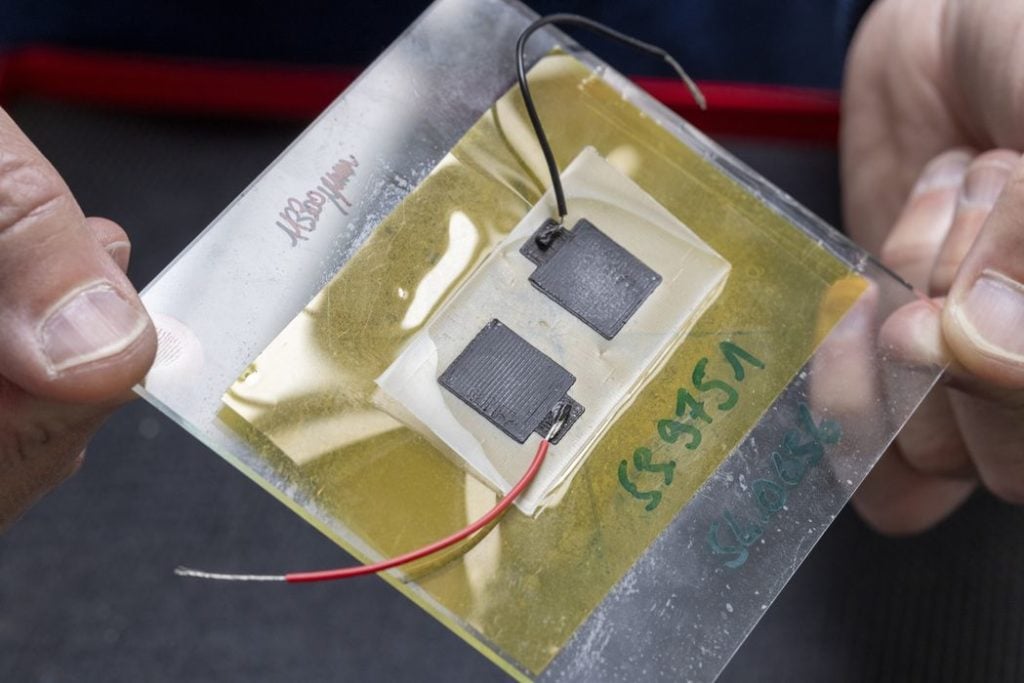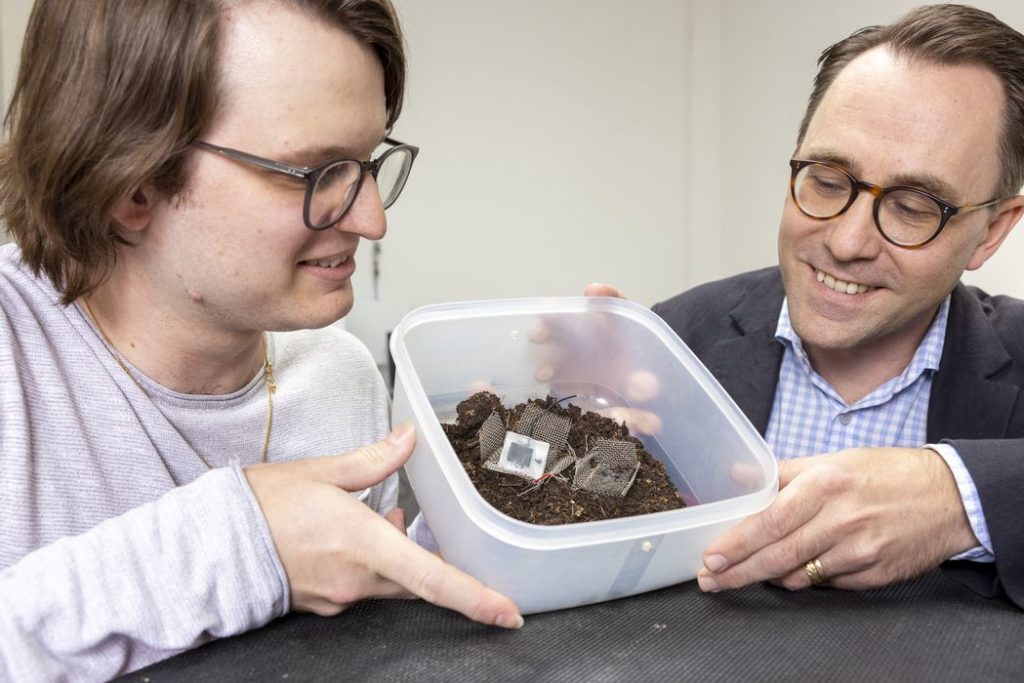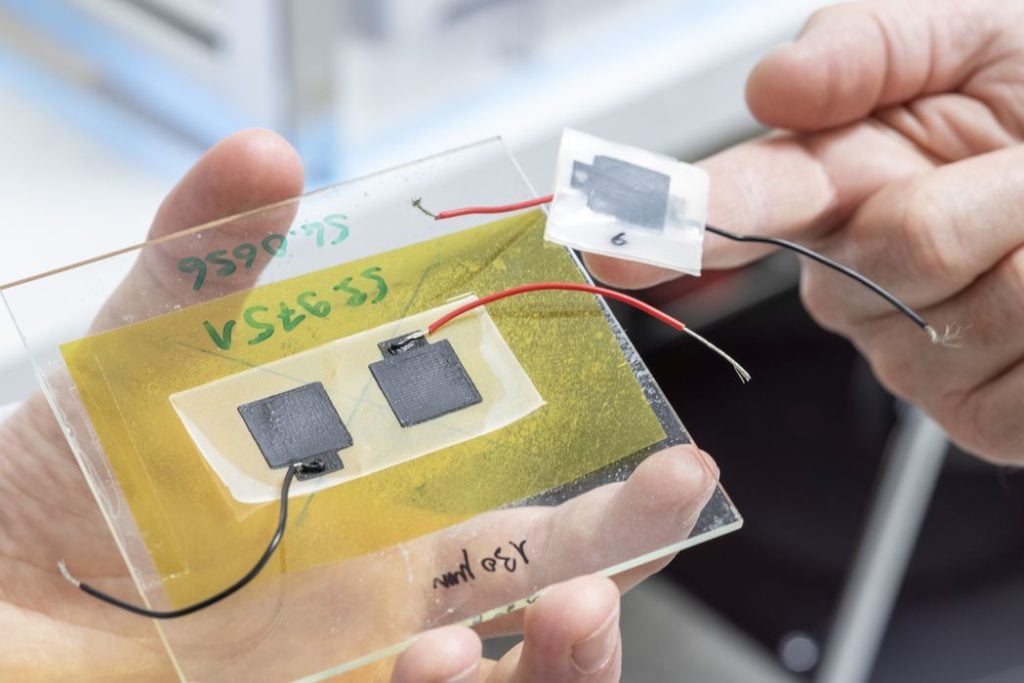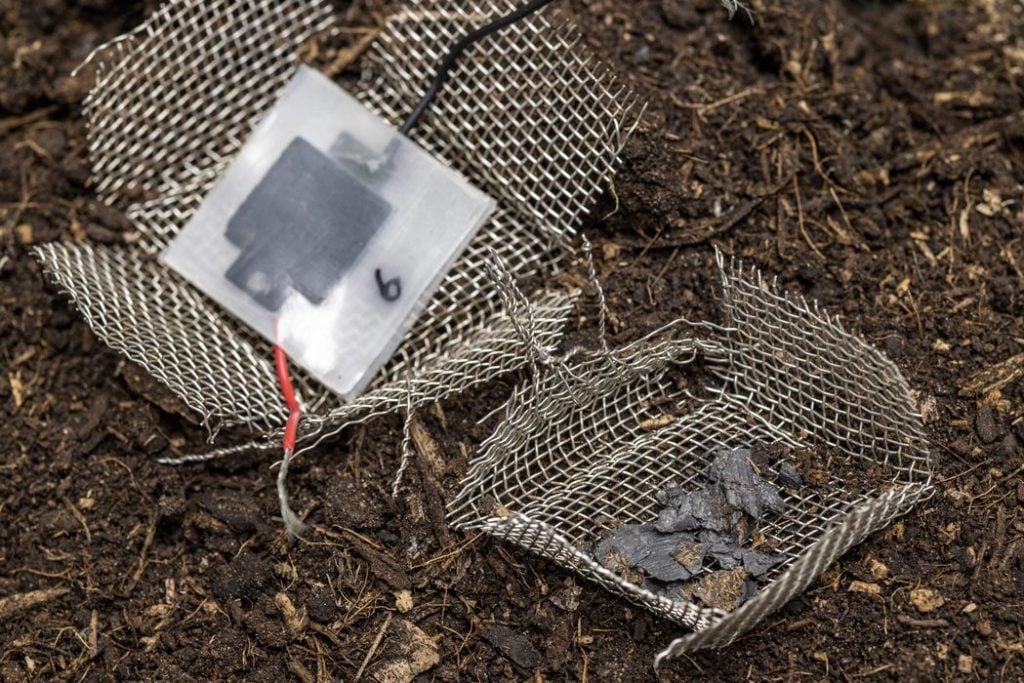
Researchers at Empa, a Swiss research institute, have developed a 3D printable battery concept that is entirely biodegradable.
3D printed batteries are a hot topic lately, with several parties developing approaches to address the major concerns with battery technologies. The most popular goal is, of course, to increase battery capacity, and 3D printing can be used to do so by producing complex structures capable of holding more electrons.
However, there are other problems with batteries that require resolution, and one of them is disposal. Current battery designs involve several metals, some of which are toxic. With the expectation of massive global electrification in the next few years, we’ll soon see literally mountains of waste batteries.
Disposing of them in traditional ways will no doubt result in toxic sites worldwide, and that’s generally not a good thing.
The goal would be to produce an effective battery design that is made from materials that could completely decompose when disposed. That’s no small feat, and it turns out Empa researchers have done just that.

Xavier Aeby and Gustav Nyström developed a “biodegradable battery” using 3D printing technology.
In fact, it’s actually a “mini-capacitor”, and is made from organic materials including cellulose, carbon, glycerin and salt. Specifically, the ingredient list contains:
- Cellulose nanofibers
- Cellulose nanocrystallites
- Carbon black
- Graphite
- Activated carbon
- Glycerin
- Water
- Two different types of alcohol
- Table salt for ionic conductivity
These materials are combined into gels that are 3D printed using a modified 3D printer using a paste extruder. You can see how the printing process works in their short video:
Structurally, the 3D printed battery is composed of four layers placed together like a sandwich, with some electrolyte in the center.

The researchers explained that the resulting battery is incredibly versatile, much to their surprise:
“What emerges is an ecological miracle. The mini-capacitor from the lab can store electricity for hours and can already power a small digital clock. It can withstand thousands of charge and discharge cycles and years of storage, even in freezing temperatures, and is resistant to pressure and shock.”

If that wasn’t enough, the battery is completely, and I mean completely, decomposable when disposed into the environment. They explain:
“When you no longer need it, you could toss it in the compost or simply leave it in nature. After two months, the capacitor will have disintegrated, leaving only a few visible carbon particles.”
That’s great news, but what applications might this 3D printed battery have in store for us?
A potential application is anything requiring temporary batteries, and one that comes to mind is packaging. Imagine if these batteries were pasted on the side of packages and could power whatever tracking equipment or environmental monitoring devices were required. After the shipment arrives, the battery can be tossed along with the package and it decomposes in a similar manner.
Via Empa (Hat tip to Benjamin)
